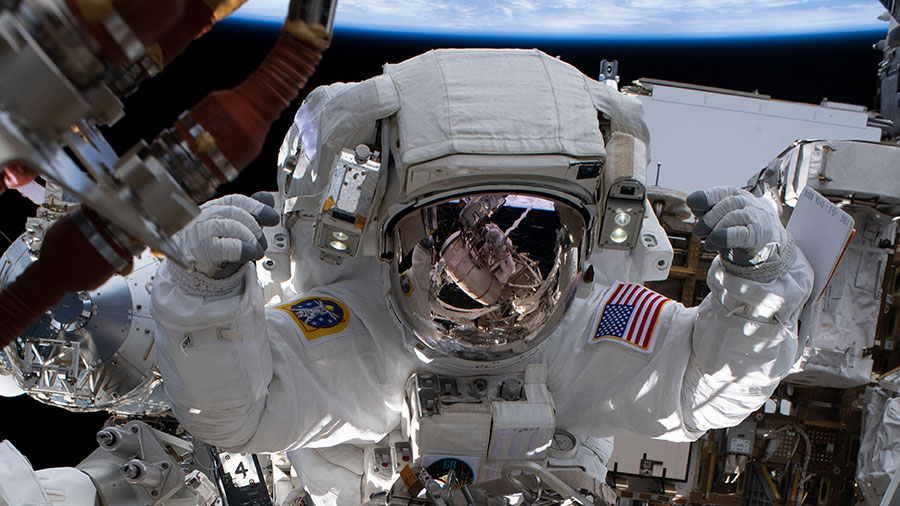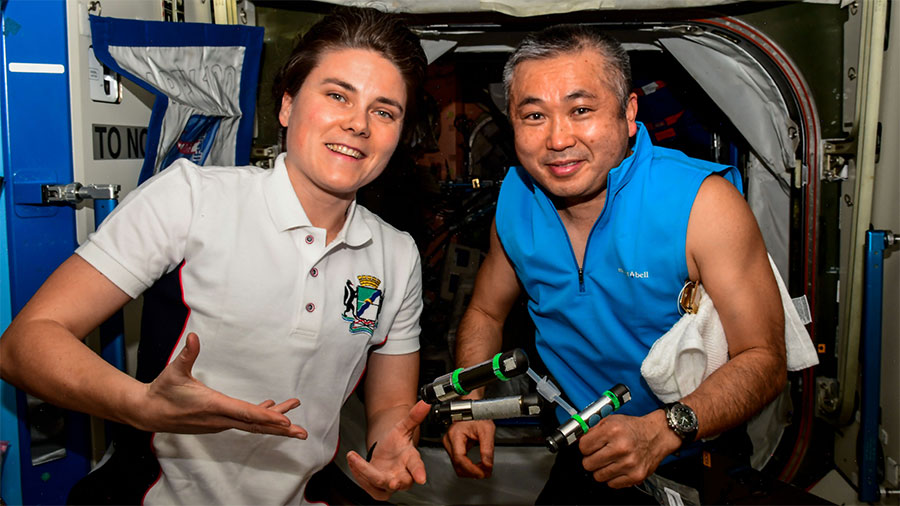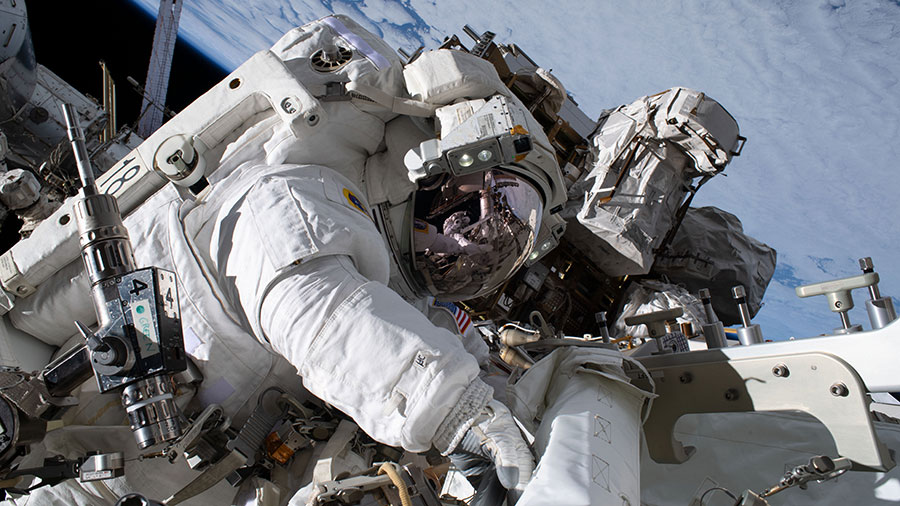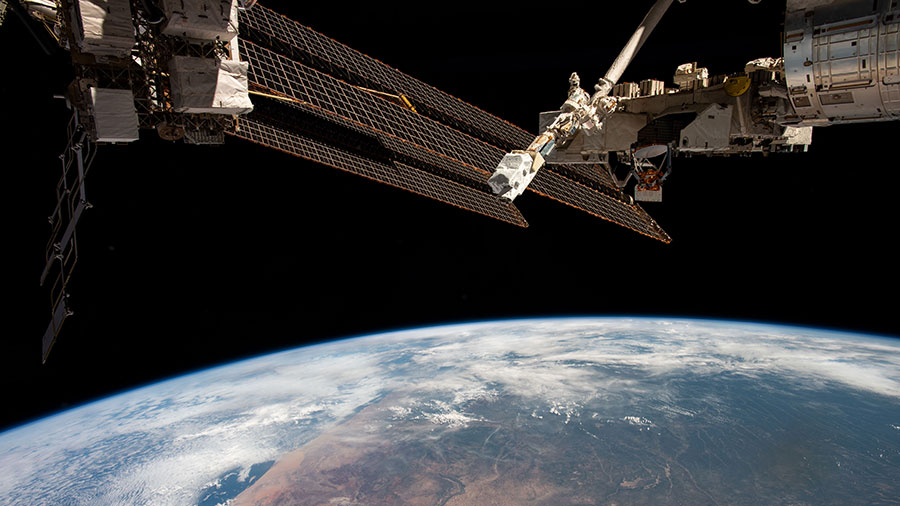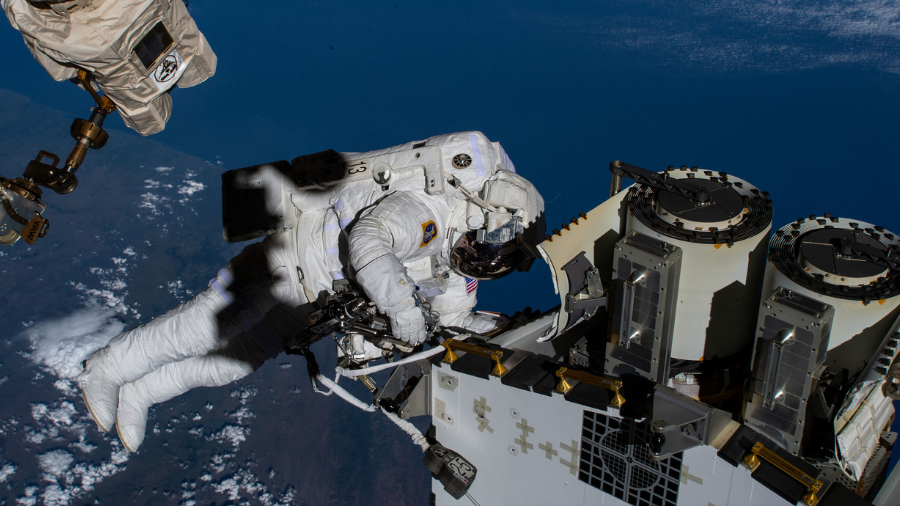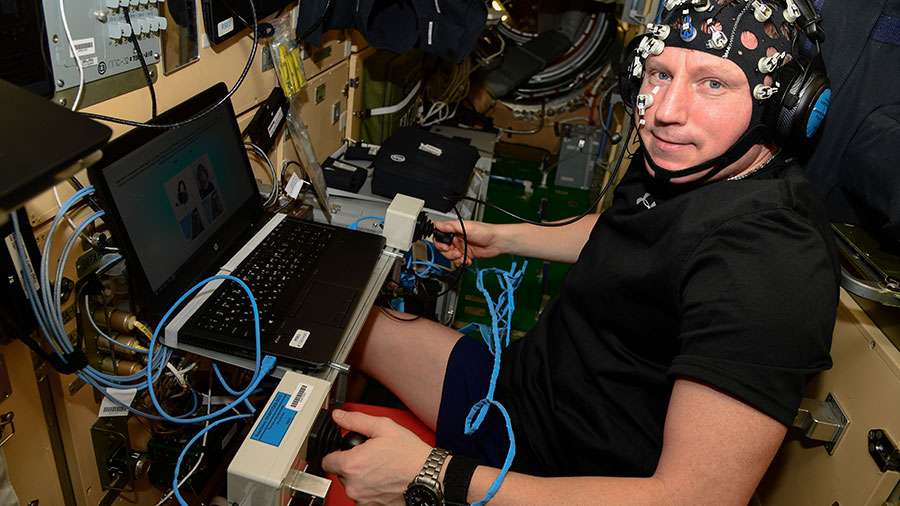
Two Expedition 68 astronauts continue gearing up for a spacewalk scheduled for Thursday at the International Space Station. The orbital residents also kept up a host of research activities as they serviced science gear, studied human research, and explored future technologies.
The next spacewalk is scheduled to begin at 8:15 a.m. EST on Thursday to continue upgrading the space station’s power generation system. Flight Engineers Nicole Mann of NASA and Koichi Wakata of the Japan Aerospace Exploration Agency (JAXA) will spend about seven hours in the vacuum of space completing the hardware installation job that they began on Jan. 20 during their first spacewalk. NASA TV, on the agency’s app and website, will begin live spacewalk coverage at 6:45 a.m.
Mann and Wakata started Tuesday morning organizing their tools, tethers, and other spacewalking components inside the Quest airlock ahead of Thursday’s excursion. Afterward, the duo split up as Mann worked in the Columbus laboratory module and cleaned up the BioLab facility that enables research into microbes, cells, tissue cultures, and small invertebrates. Wakata later took a robotics test on a computer measuring his performance, behavior, and cognition while living in space.
NASA Flight Engineers Josh Cassada and Frank Rubio worked throughout the day maintaining physics and biology hardware. Cassada installed the BioFabrication Facility in the Columbus lab that will be used to investigate manufacturing human organs in microgravity. Rubio worked in the Kibo laboratory module cleaning up the Life Science Glovebox following several days of advanced bone healing studies last week.
Two cosmonauts took turns today studying how future space crews might pilot spacecraft or robots on potential planetary missions. Roscosmos Commander Sergey Prokopyev and Flight Engineer Anna Kikina both wore a helmet with electrodes attached and simulated piloting techniques, such as docking a spaceship or commanding a robot on a planetary surface, on a computer.
Flight Engineer Dmitri Petelin spent his morning investigating fluids exposed to magnetic and electric fields in microgravity. During the afternoon, he moved on to orbital lab maintenance and worked on an oxygen generator before servicing water and drainage valves.
The remotely-controlled Canadarm2 robotic arm jettisoned flight support equipment during the day that was delivered aboard the SpaceX Dragon cargo ship on Nov. 27, 2022, toward Earth’s atmosphere. The flight hardware secured a pair of roll-out solar arrays inside Dragon’s trunk during its ascent to orbit and rendezvous with the space station. The jettisoned support equipment drifted safely away from the station and will eventually harmlessly burn up in the atmosphere with no chance for recontacting the space station.
Learn more about station activities by following the space station blog, @space_station and @ISS_Research on Twitter, as well as the ISS Facebook and ISS Instagram accounts.
Get weekly video highlights at: https://roundupreads.jsc.nasa.gov/videoupdate/
Get the latest from NASA delivered every week. Subscribe here: www.nasa.gov/subscribe

